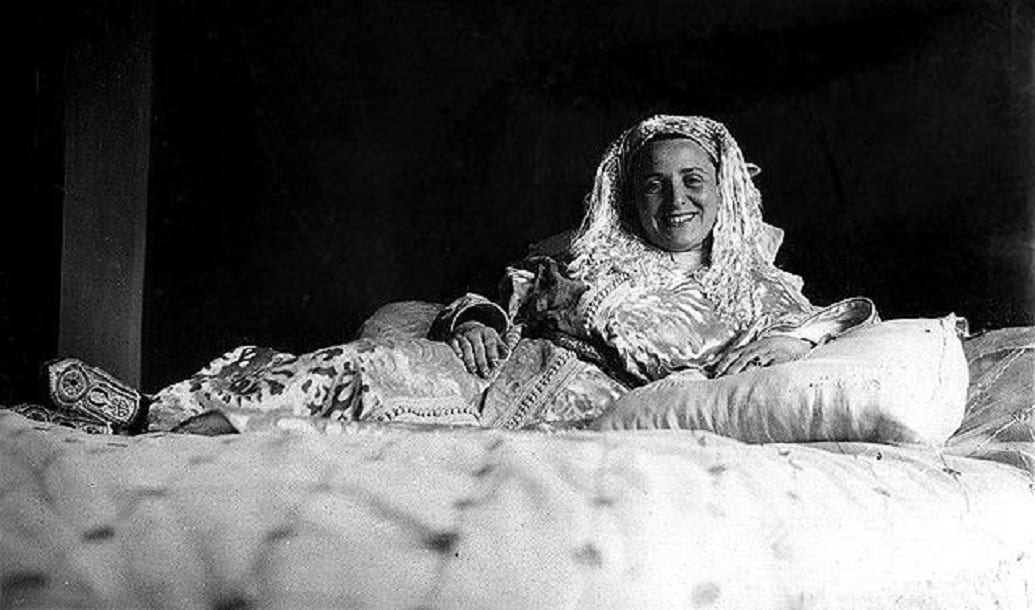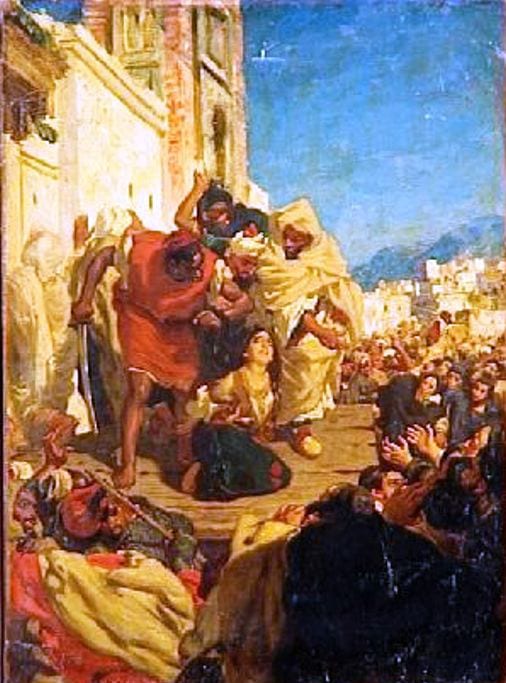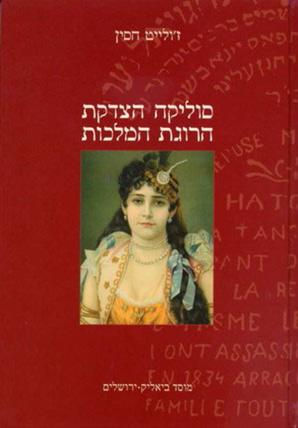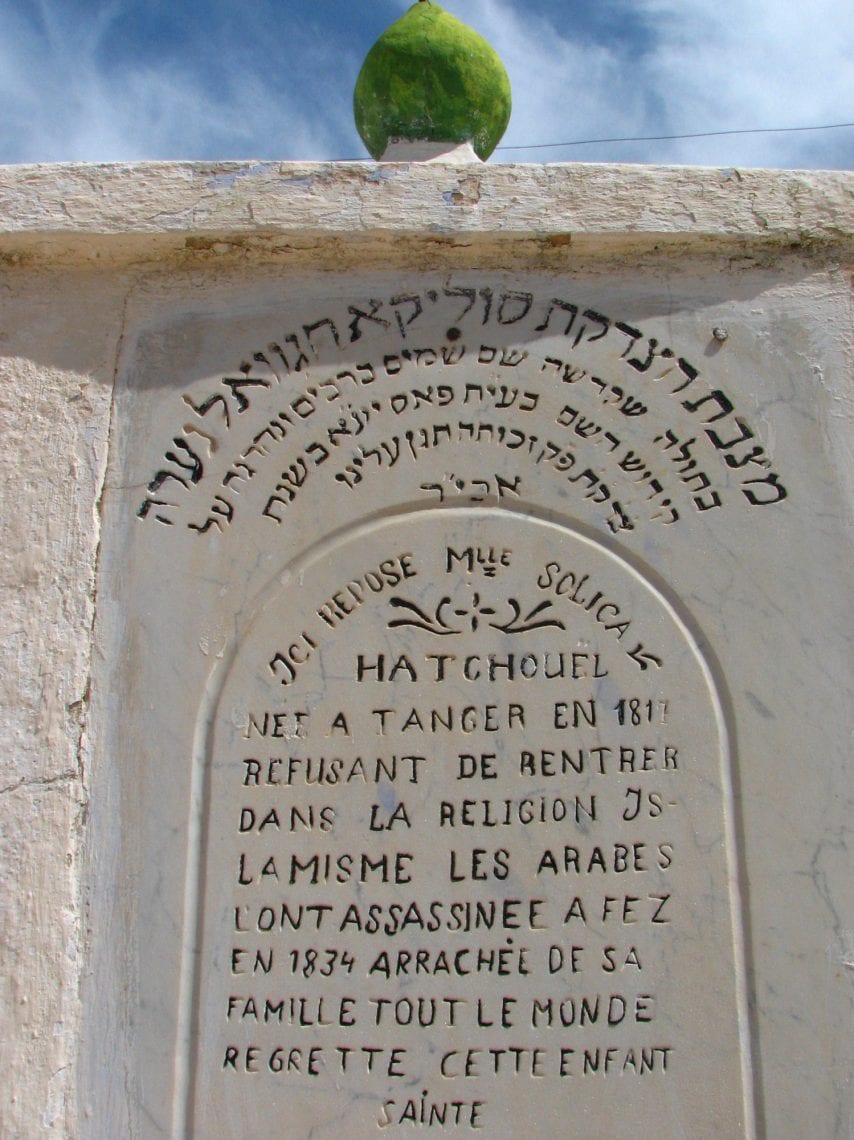Jewish women in Morocco uttered her name with awe and admiration, pilgrims visit her tombstone in Fez to these days, almost two centuries after her death, and hundreds of poems, lamentations, piyyutim, essays and books in numerous languages were written about her. But Sol Hachuel is still a mystery.
Was Sol Hachuel – Solica – a hasty teen whose one mistake costed her with her life? Was she a breath taking beautiful martyr, tangled up in a romantic affair which led to her decapitation at the age of 15 for “rida” – the sin of heresy in Islam?
One fact can be agreed upon. Sol Hachuel was indeed executed buy the Muslim authorities. The exact date, according to historians, especially Prof. Juliette Hassine, who published a comprehensive study about the affair, was June 5, 1834. What was the course of events that led to that tragic ending? And what about the numerous legends woven about the protagonists – do they settle with the historical facts?

The first record to shed light on the tragedy of Sol Hachuel was written immediately after the events, by Drummond Hay, who served as the British consul in Tangiers 1829-1845.
Five days after Sol’s execution, Hay updated his diplomatic log regarding a 14 or 15 years old “Jewess by the name of Sol Hachuel, executed according to a ruling by the Ulama (a body of religious scholars) for heresy, after denying her original religion due to a domestic argument, during which her mother hit her. Jews of Tangiers urged the innocent girl to return to her religion, and as a result, the Muslim authorities arrested her. It seemed that the cadi was determined to achieve a death sentence for that unwise girl”
So in a nutshell, we hear of a teenager who quarreled with her mother, cried out some heretic words against Judaism, then when she tried to take them back, after scaring off the entire community – it is too late, as she was already considered by the law to be a Muslim, therefore had to obey the heresy laws of Islam.

According to Quran laws, as interpreted by the authorities back then, a person who regretted converting to Islam was called murtad. The murtad had three days to repent, or expect an execution. Sol Hachuel refused to acknowledge her conversion, therefore on June 5 1834 was forced to the Fez market square, where she was publicly executed by decapitation, surrounded by cheering crowds. It was reported that just before taking her last breath she shouted, I was born a Jew and shall remain a Jew.
Thus ends the British counsel’s account, which is considered reliable, yet leaves quite a lot of holes in the mysterious story.
Other versions of the play exist, though. Layers were added in time, more plots and additional characters were mixed into this fascinating tragedy. One of them is by a Christian Spanish author called Eugenio Maria Romero, written in 1837, three years after the affair took place.
As it turns out from Romero’s prolog, an encounter he had with a witness who told him about the affair, moved him so much he decided to leave Spain to Morocco in order to visit the place where Sol’s blood was spilled. He interviewed some witnesses there, including Sol’s parents.
Romero reveals a new character in the tale: Sol Hachuel’s neighbor, a devout Muslim woman called Tahra de Mesoodi, told him that she was the one to persuade Sol to convert to Islam, because that would make Tahra a righteous according to the maliki interpretation of the Quran in Sunni Islam.

Following Tahra’s testimony, Hachuel was summoned to court and forced to kneel in front of the governor, and admit that she had indeed converted. She refused and the pasha threatened her with horrible tortures such as heavy chains, her flesh eaten by wild animals, starvation imprisonment, for spurring prophet’s rage. Hachuel was not intimidated by his threats, and died very heroically.
Another account of Sol’s death is by Israel Joseph Benjamin, a Jewish traveler who visited Morocco in the middle of the 19th century. According to his narrative, Hachuel’s beauty was so breathtaking, that the Muslims were saying it was a waste to leave such a gem in the hands of the Jews. Following her friendship with her Muslim neighbor, Hachuel met a Muslim fellow who fell in love with her and demanded that she converts. Thought she had feelings for him too, she refused to convert after being urged by her community. Though it cannot be determined whether she converted at all, or converted and changed her mind, the authorities claimed that she did, therefore she was trialed and executed in Fez a while later.

Legendary decorations were added to the story as time went by, that made it harder to reach the historical essence: did Sol convert to Islam hastily, after a quarrel with her mother and then went back on? Did she even convert at all, or was falsely accused? Was there a love story involved, a kind of inter religious Romeo and Juliet of the Maghreb?
Like in many other myths, does it really matter? The heroic self-sacrifice of Sol Hachuel made her a martyr and inspired many literary works, art pieces, lamentations and piutim, including one by the famous poet Shmuel Elbaz, and another by rabbi Yaakov Abuhassira, a great rabbi in Morocco, who praised Sol and her act.
Hachuel is admired among Muslims, too, who refer to her until now as Lala Solica (Solica the saint lady). The Jewish martyr became a legend and symbol among Jews from Morocco, remembered with other martyrs such as Judith and Hannah.